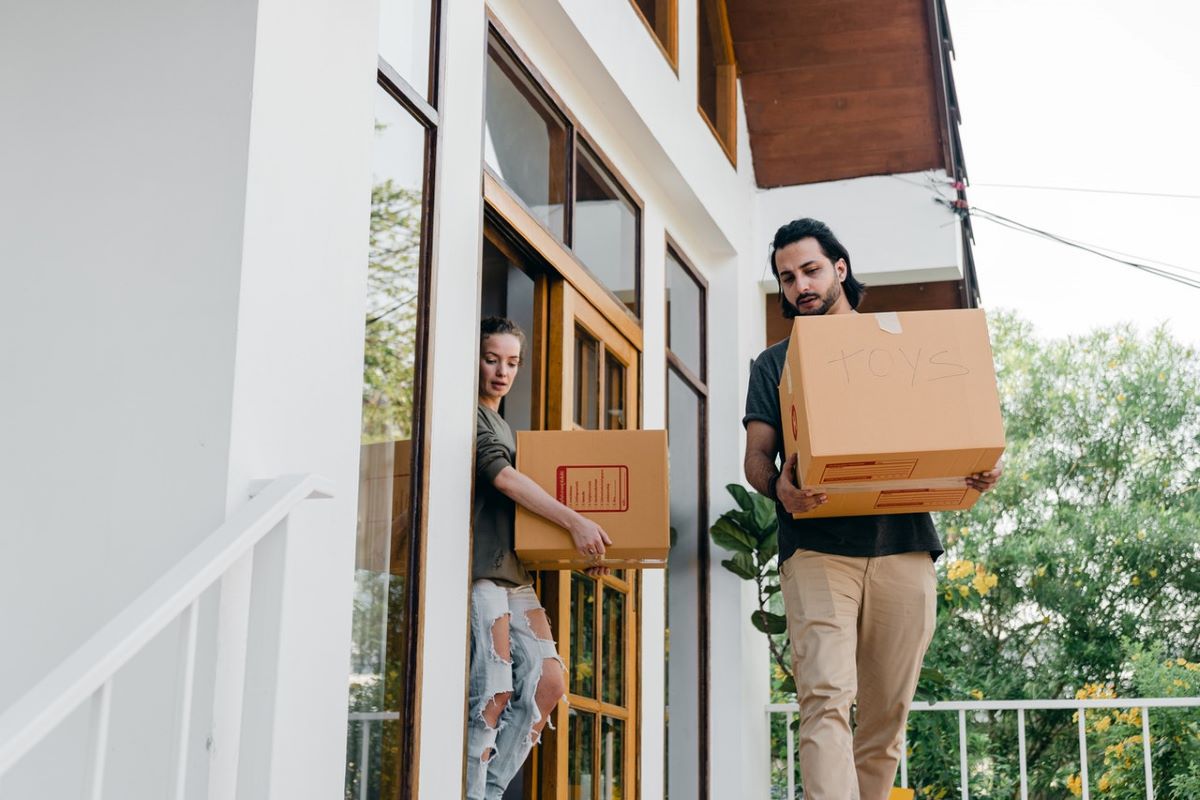Packing is by far the most demanding moving task. But it’s not just the physical labor that makes it so difficult. No, there’s so much more than that. There’s so much you have to do before you start packing your belongings for moving. For example, you have to declutter your belongings, then measure, categorize, and organize them, and only then can you go shopping for supplies, and finally start packing. That said, even something like collecting packing materials can be quite difficult. Especially if you lack experience, it can be quite hard to know what to get. Luckily for you though, Verified Movers can help you create the ultimate list of packing supplies. Simply read on and you’ll find out all about materials that are an integral part of any pre-moving shopping list.
Moving Boxes Are the First Packing Material Anyone Should Get When Preparing for a Move
Unless you want to hire one of the top movers in Minneapolis to handle the packing for you, you’re going to have to go shopping for supplies yourself. In a city with 425,000 people, where the population is growing, offering moving boxes as part of the relocation package is the only feasible solution.
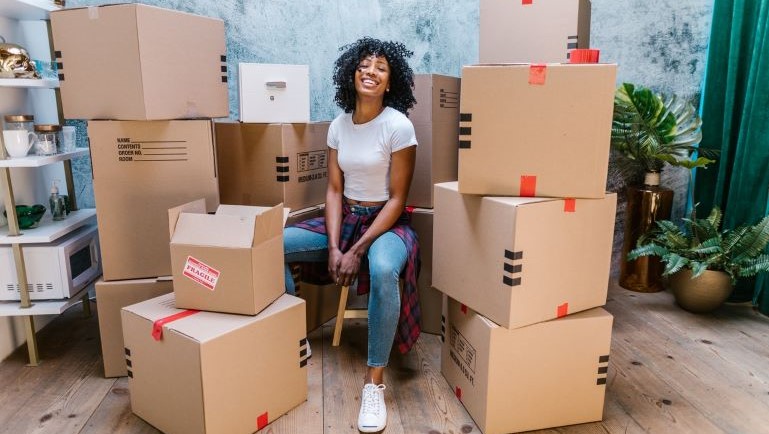
And the first thing you should get is moving boxes. If you don’t have moving boxes, you can’t move. And while other supplies are important too, you could technically move without them – but we strongly discourage you from doing that.
What kind of boxes should you be looking for?
Not all moving boxes are the same. The quality significantly varies between the boxes. That’s why you should make sure to get very sturdy heavy-duty moving boxes. But it doesn’t stop there. You should also make sure to get boxes in the correct sizes. Because of that you should do an at-home evaluation of your belongings and make a list of box sizes and amounts of each size before you go shopping. That’s pretty much what all expert cross country moving companies Minneapolis would advise you to do. And they have tons of experience, so you should listen to them.
Different-sized boxes for different needs
When discussing moving boxes, highlighting the variety of sizes and their specific uses is crucial. These boxes come in several standard sizes: small, medium, large, and extra-large. Each size serves a different purpose, making your move more organized and efficient.
- Small boxes, typically around 16x12x12 inches, are perfect for heavier items such as books, DVDs, tools, and canned goods. These items are easier to transport in smaller quantities, ensuring the box remains manageable in weight.
- Medium boxes, measuring approximately 18x16x18 inches, are versatile and ideal for a mix of moderately heavy and lighter items. Think of kitchen appliances, toys, and smaller electronics. These are your go-to boxes for the bulk of your belongings, offering a balance between size and weight.
- Large boxes, around 20x20x15 inches, suit lighter, bulkier items like linens, towels, and larger kitchen gadgets. Their size allows for the packing of awkwardly shaped or larger items that don’t weigh as much, preventing the box from becoming too heavy to lift.
- Extra-large boxes, with dimensions of about 23x23x16 inches, are designed for the lightest, most cumbersome items. Comforters, pillows, and coats fit well in these boxes. They ensure these voluminous items are easy to move while protecting them during transit.
For a standard-sized move, such as a two-bedroom apartment, a rough estimate would suggest using:
- 10-15 small boxes for heavy items
- 10-20 medium boxes for a majority of your belongings
- 5-10 large boxes for bulky items
- 2-5 extra-large boxes for bedding and light items
Ensure you have a variety of boxes that cater to all your packing needs – combine them with our packing tips for making your moving process easier and more organized!
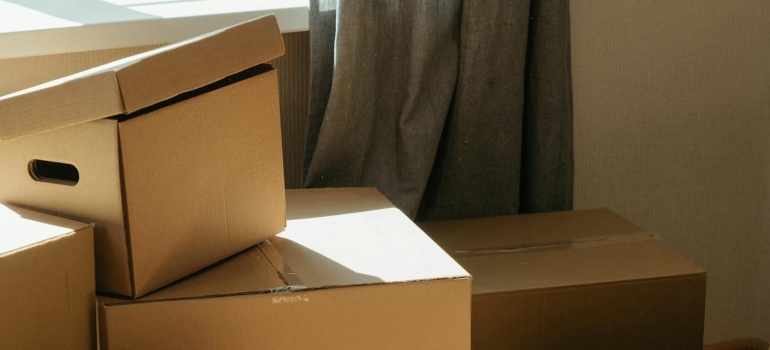
Padding Materials Are Definitely Among the Must-Have Packing Materials
Unless you want your belongings to get damaged during transportation you have to get some padding materials. But this is where things can get a bit confusing. While moving boxes are pretty straightforward, padding materials are a bit more complex than that. First of all, there are all sorts of packing materials. There are:
- Packing peanuts
- Packing paper
- Bubble wrap
- Moving blankets
- Packing foam
Each of these can be used for padding and protection. However, not all are well-suited to every situation. For example, you wouldn’t use packing peanuts to pad your bedframe. But, you’d use those same packing peanuts to pad fragile china in one of your moving boxes. So before you go shopping for packing materials, consider hiring top movers in Boston since they are the best when it comes to moving and packing.
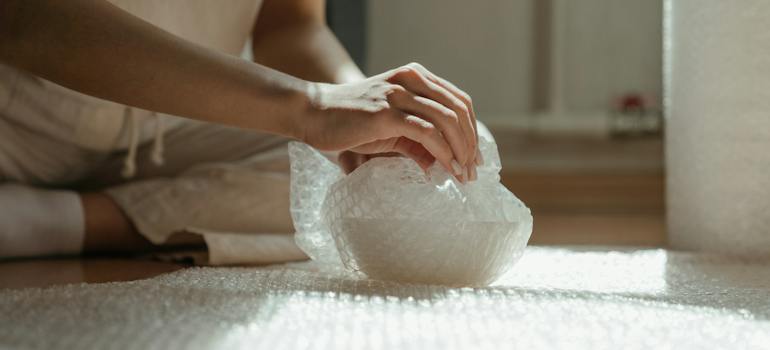
Consider getting sustainable padding materials
Considering the impact on the environment, it’s beneficial to explore sustainable alternatives for padding materials during your move. These eco-friendly options not only protect your belongings but also contribute to reducing waste. Let’s delve into some of the best sustainable packing materials, their costs, and where to find them.
Biodegradable packing peanuts
Unlike traditional Styrofoam peanuts, biodegradable packing peanuts dissolve in water and leave no toxic waste. They are perfect for filling gaps in boxes and protecting fragile items. You can find them at most packaging supply stores or online, with prices around $20-$30 for a 14 cubic feet bag.
Recycled packing paper
Recycled packing paper offers an excellent alternative to new paper for wrapping and cushioning. It’s just as effective and has a lower environmental footprint. A 10-pound box of recycled packing paper typically costs about $25 and is widely available at moving supply stores and online retailers.
Corrugated bubble wrap
Made from upcycled cardboard, corrugated bubble wrap is a great substitute for plastic bubble wrap. It’s flexible, reusable, and compostable. Prices vary, but you can expect to pay around $30 for a large roll. Look for it at eco-friendly packaging suppliers or online.

Rentable moving blankets and boxes
Some companies offer moving blankets and boxes for rent. This option reduces waste and can be cost-effective. Prices depend on the rental period and quantity, but this can significantly lower your moving expenses and environmental impact. Check local moving companies or specialized online services.
The benefits of sustainable packing materials
Choosing sustainable materials for your move supports a healthier planet by reducing landfill waste and promoting recycling. These materials often come from recycled content or are biodegradable, lessening the demand for new resources. Additionally, eco-friendly packing options can be cost-competitive and sometimes even cheaper than traditional materials. Incorporating these sustainable items into your moving checklist ensures a more environmentally responsible move. By making these choices, you not only protect your belongings but also contribute to a greener future.

Packing Tape Is Another Must-Get When Preparing for a Move
You’d have a rough time packing without packing tape or duct tape. Just imagine all the mess you’d have to deal with if you had nothing to seal the boxes and secure your furniture with. That’s why tape should be on your shopping list. Just make sure to get a thick tape with strong adhesive. All top movers in San Jose would tell you that flimsy packing tape is pretty much as good as non-existent packing tape. If you move during the winter, the weather in San Jose tends to get rainy, so make sure to tape those boxes shut! That means that you should invest in quality tape. Even if it costs a bit extra.
Luckily, finding good and strong packing tape isn’t that hard. You’ll likely find it wherever you’re going shopping for other packing materials. Also, make sure to get enough. It can be quite frustrating to run out of packing tape mid-packing.
Don’t Skip Labeling Materials
Labeling can sometimes seem like such a waste of time. Especially to those who know nothing about moving. On the other hand, those that do know even a little about moving, understand how important proper and thorough labeling is. But, to label efficiently, you have to get some materials. Most people go for just permanent markers. If you’re one of those people, just make sure to get quality markers in dark colors that are smudge-proof. That said, if you’re feeling particularly fancy, you can also get stick-on moving labels and then fill them in with those same markers. However, labels are nice to have but are not a must. You’ll do fine with just the markers.
The color-coding system stands out for its efficiency. Assigning a specific color to each room not only simplifies unpacking but also assists movers in placing boxes in the correct locations. This method requires a variety of colored markers or colored labels to be implemented effectively. In case you think you need help, you should read Movingplace reviews and find out everything you need to know!
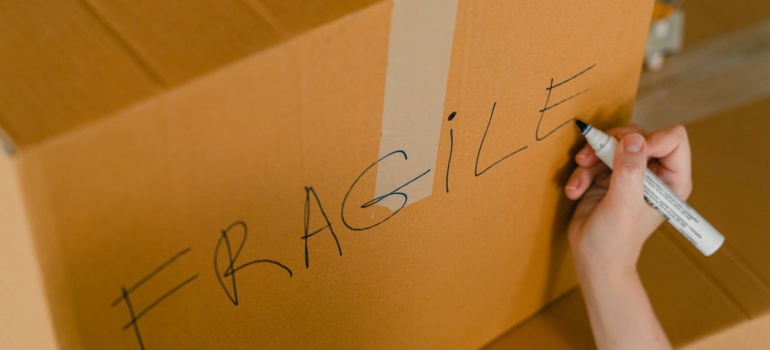
For those who move frequently, erasable labels present a reusable, eco-friendly option. These labels can be wiped clean and re-labeled, making them perfect for people who move regularly. Another relevant suggestion is to list contents briefly on the box label, particularly for items you might need immediately upon arrival. This addition avoids the need to open multiple boxes to find essentials, making the first night in a new home more comfortable.
Special Moving Supplies for Special Items
When moving valuable or delicate items, specialty packing materials become essential for ensuring their safety. For example, art boxes, designed specifically for framed artwork and mirrors, offer sturdy protection against impact and pressure changes. Similarly, dishware boxes, with their double-walled construction, provide enhanced protection for plates, bowls, and glasses, often including cardboard dividers to prevent scratches and chips. These specialized boxes cater to the unique needs of fragile items, ensuring they arrive at their destination in the same condition as when they were packed.
You can find these specialty packing materials at moving supply stores, online retailers, and sometimes directly from moving companies. The cost varies based on size and quality, but on average, art boxes can range from $10 to $50 each, while dishware packs might cost between $10 and $40, depending on their complexity and capacity.
The benefits of using these boxes for specialty items are manifold. They provide peace of mind by significantly reducing the risk of damage during transit. Their tailored design means that they fit the items perfectly, minimizing movement and the potential for harm. Moreover, investing in these materials can save money in the long run by preventing costly damage to valuable items. Utilizing specialty packing materials is a wise choice for anyone looking to protect their investments during a long distance move, especially.
Packing Supplies You Didn’t Know You Needed
While the basics like boxes, tape, and bubble wrap are well-known, there are several essential packing supplies that often fly under the radar but can greatly enhance the efficiency and ease of your move. One such invaluable item is plastic zip bags, perfect for keeping small parts, like screws and brackets from disassembled furniture, organized and easily accessible. Labeling these bags according to the furniture piece they belong to can save hours during reassembly.
Wardrobe boxes are another game-changer, allowing you to move clothes directly from closet to box without folding, thus preventing wrinkles and saving time on both packing and unpacking. These tall boxes come with a hanging rod and are ideal for transporting dresses, suits, and coats.
For those with an extensive collection of books, small book boxes can prevent overpacking and make transportation manageable. These specialized boxes ensure your books are protected without making the box too heavy to lift.
Also, you should consider using specialty cushioning materials, like foam wraps or inflatable bags, for packing electronics or fragile items. These supplies offer superior protection compared to traditional packing materials.

How Much Can You Expect to Pay for Packing Materials?
For a standard-sized move, such as relocating from a two-bedroom apartment, understanding the cost breakdown of packing materials is crucial for budgeting purposes. This is also one of the most frequent moving FAQs. On average, moving boxes might be your most significant expense. A variety of sizes will be necessary, with small boxes costing around $1-$2 each, medium boxes at $2-$3, large boxes at $3-$4, and extra-large boxes perhaps $4-$5 each. Anticipate needing around 10-15 small boxes, 10-20 medium boxes, 5-10 large boxes, and a few extra-large boxes, leading to an estimated total of $100-$150 for boxes alone.
Bubble wrap and packing paper are indispensable for protecting your items. A 100-foot roll of bubble wrap can cost around $20, and a 10-pound bundle of packing paper around $25. Packing tape is another necessity, with each roll costing about $2-$3, and you might need 3-5 rolls, totaling around $10-$15.
Specialty items like wardrobe boxes, which can cost $10-$20 each, and mattress bags, priced at $10-$15, might also be required depending on your specific needs. Adding in miscellaneous supplies like markers and labels, the total cost for packing materials can easily range between $200-$500. This estimate helps in planning and ensures you can allocate your moving budget effectively, making the process smoother and more manageable.
If You Hire Professional Movers You Won’t Have to Worry About Packing Materials
If this list gave you a headache, now would be the time to reconsider hiring professional movers. We understand that hiring movers can be quite pricey, especially long distance movers Alaska. In this remote state, professional insight and high-quality packing materials make all the difference. However, oftentimes paying for things yourself as you go can turn out to be more expensive than simply paying movers to do everything for you. For example, sometimes paying movers to pack you can end up being much cheaper than going out and buying all supplies yourself. So if you think getting the correct supplies and packing yourself sounds not only tedious but scary, you might want to rethink hiring movers.
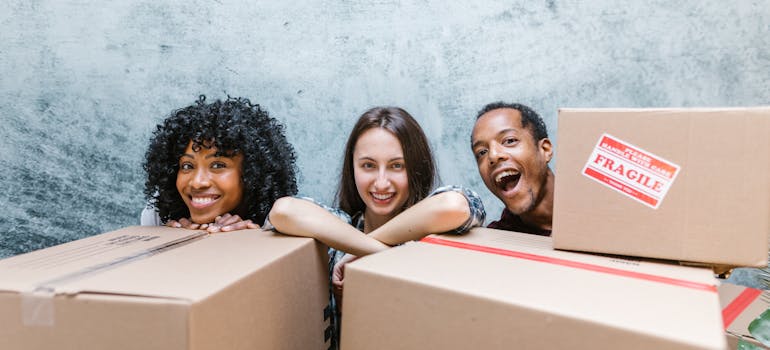
Packing Is Hard Without the Right Packing Materials
As mentioned above, packing can be challenging and bothersome. Add bad packing materials into the mix and you’ve got yourself a headache-inducing disaster. That’s why, if you wish to pack your belongings yourself, you should at least get good supplies. And of course, get them in the right quantities and sizes. And why this list may be enough to help you craft your ultimate packing supplies shopping list, we would advise you to read up a bit more on the subjects of moving materials, so that you can make the best decision possible for your particular moving situation!
